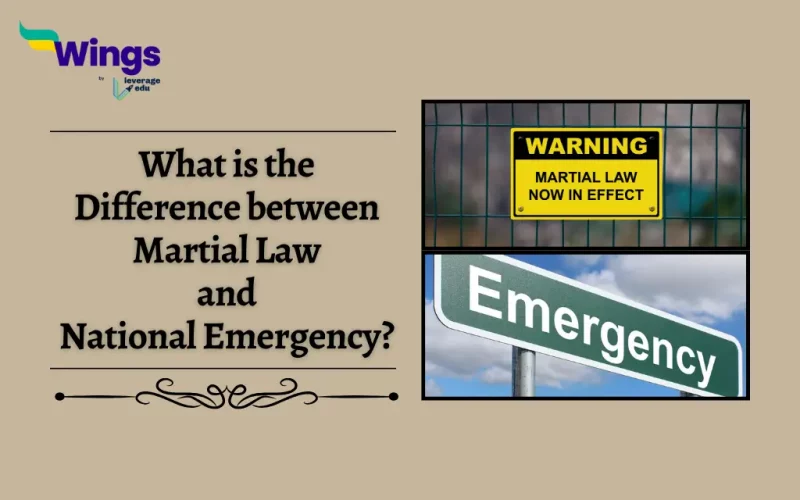There is no mention of Martial Law in the Indian Constitution but it is a situation wherein the military takes control. It replaces governance of the people and suspends most Fundamental Rights. On the other hand, a National Emergency under Article 352 of the Indian Constitution suspends certain Fundamental Rights. Moreover, it gives the Central Government additional powers and does not remove the governance of the people. Read on to know the details of the Difference between Martial Law and National Emergency!
Difference between Martial Law and National Emergency
Table of Contents [show]
Moreover, here is a detailed difference between both:
| Difference between Martial Law and National Emergency | ||
| Feature | Martial Law | National Emergency |
| Purpose | Restore order in a specific region during a serious crisis (war, rebellion) when civilian authorities fail. | Address threats to the security of India, caused by war, external aggression, or internal disturbance. Can be declared nationwide or in a specific part of the country. |
| Authority | Martial Law is declared by the military. | Emergency is declared by the President of India. |
| Legal Framework | Relies on military law, regulations, and orders. | Governed by provisions outlined in the Indian Constitution and the Emergency Provisions Act. |
| Impact on Civilian Authority | Military takes over administration and law enforcement. Civilian courts may be suspended. | Civilian government continues to function. Courts operate normally. |
| Duration | No set duration. Revoked when the crisis subsides. | Initially for 6 months, extendable for further periods with Parliamentary approval. |
| Fundamental Rights | Can be suspended to varying degrees depending on the situation. | Specific Fundamental Rights can be suspended by the President’s order. (Articles 19 and 21) |
| Parliamentary Oversight | Not directly subject to parliamentary approval. | Requires approval from both Houses of Parliament (Lok Sabha and Rajya Sabha) after the proclamation. |
| Review and Oversight | Limited Judicial Review, military tribunals often used for legal matters | Subject to Judicial Review, oversight by Parliament, and regular reports to the President |
Key Points to Remember
Additionally, here are some key points to remember:
- Martial Law is a more extreme measure with a greater impact on civilian rights and freedoms.
- National Emergency allows the Government to take extraordinary measures while maintaining the basic framework of the constitution.
Related Blogs
Lastly, we hope you liked our blog and gained an understanding of the Difference between Martial Law and National Emergency. Moreover, you may even read more blogs and empower yourself with knowledge regarding Civics and Polity!
 One app for all your study abroad needs
One app for all your study abroad needs















 45,000+ students trusted us with their dreams. Take the first step today!
45,000+ students trusted us with their dreams. Take the first step today!
